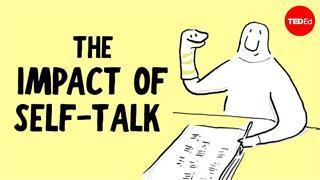 |
 |
| "We All Have Mental Health" is an educational video designed to help young people understand and prioritize their mental well-being. It explains that mental health, like physical health, affects everyone and needs care and attention. The video highlights common challenges such as anxiety and stress, emphasizing that experiencing these feelings is normal. It encourages seeking help from friends, family, or professionals and provides self-care strategies like exercise, sleep, and relaxation. Additionally, it promotes open conversations to reduce stigma and create a supportive environment for discussing mental health. Through clear messaging and engaging visuals, the video empowers viewers to recognize the importance of mental health, seek support when needed, and foster empathy toward others. |
"10 Common Mental Illnesses Crash Course" provides an informative overview of prevalent mental health disorders, aiming to enhance understanding and reduce stigma. It covers conditions such as depression, anxiety disorders, bipolar disorder, schizophrenia, eating disorders, obsessive-compulsive disorder (OCD), post-traumatic stress disorder (PTSD), borderline personality disorder, attention-deficit/hyperactivity disorder (ADHD), and autism spectrum disorder. For each condition, the video outlines key symptoms, potential causes, and general treatment approaches, emphasizing the importance of recognizing these disorders as medical conditions that require appropriate care and support. The video also highlights the significance of seeking professional help and fostering empathy towards individuals affected by mental illnesses. By presenting complex information in an accessible manner, this crash course serves as a valuable resource for those looking to educate themselves about mental health. |
 |
 |
| The TED-Ed video "Is it normal to talk to yourself?" explores the commonality and psychological significance of self-talk. It explains that self-talk, or inner speech, is a natural behavior where individuals verbalize thoughts directed toward themselves, encompassing both internal dialogues and vocal expressions. Psychologists note that children often engage in vocal self-talk during play, which aids in managing behaviors and emotions; as they mature, this external dialogue becomes internalized. The video highlights that positive self-talk can enhance focus, boost self-esteem, and assist in navigating challenges. Conversely, excessive negative self-talk may lead to increased anxiety and depression. Techniques from cognitive behavioral therapy (CBT) are mentioned as effective methods for identifying and modifying harmful self-talk patterns. Overall, the video emphasizes that talking to oneself is a normal aspect of human cognition with significant implications for mental health. |
The YouTube video "The 9 BEST Scientific Study Tips" by AsapSCIENCE offers evidence-based strategies to enhance learning and retention. It emphasizes the effectiveness of short, spaced-out study sessions over cramming, aligning with research on memory consolidation. Establishing a consistent study routine and environment is recommended to improve focus and reduce distractions. Active engagement with the material, such as teaching the content to someone else, is highlighted as a method to deepen understanding. The video also suggests using flashcards for active recall and self-testing to identify knowledge gaps. Setting specific goals for each session can provide direction and motivation. Regular exercise is mentioned as a way to boost cognitive function and reduce stress. The importance of adequate sleep is underscored, as it plays a crucial role in memory consolidation. Finally, minimizing multitasking and digital distractions is advised to maintain concentration and enhance study efficiency. |
 |
 |
|
The video "5 Tips to Make Assertive Communication Easier and More Effective" offers practical strategies to enhance one's assertiveness in various interactions. It begins by distinguishing assertive communication from passive or aggressive styles, emphasizing that assertiveness involves expressing one's thoughts and feelings openly while respecting others. The first tip encourages self-reflection to understand personal needs and boundaries, which is essential for clear communication. The second tip focuses on the use of "I" statements to convey feelings and needs without casting blame, fostering constructive dialogues. Thirdly, the video highlights the importance of maintaining appropriate body language, such as eye contact and an upright posture, to reinforce verbal messages. The fourth tip advises on the necessity of saying "no" when necessary, asserting one's limits to prevent overcommitment. Finally, the video recommends practicing these skills regularly to build confidence and make assertive communication a natural part of one's interactions.
By implementing these tips, individuals can improve their communication effectiveness, leading to healthier and more balanced relationships.
|
The "Stop the Stigma" video addresses the pervasive issue of mental health stigma and its detrimental effects on individuals and communities. It emphasizes that stigma often stems from misconceptions and a lack of understanding, leading to discrimination and isolation of those facing mental health challenges. The video advocates for open conversations about mental health to normalize these discussions and reduce fear and prejudice. It highlights the importance of educating oneself and others to dispel myths and promote empathy. By sharing personal stories and experiences, the video demonstrates that mental health issues are common and can affect anyone, underscoring the need for compassion and support. It calls on viewers to challenge stigmatizing language and behaviors in their communities, fostering an environment where individuals feel safe to seek help. Ultimately, the video conveys that collective efforts in understanding and acceptance are crucial in combating mental health stigma. |
 |
|
|
The YouTube video "What is Good Mental Health?" by CareChannel explores the concept of mental well-being and its significance in daily life. It emphasizes that good mental health is more than the absence of mental illness; it involves a state of well-being where individuals can cope with normal life stresses, work productively, and contribute to their communities. The video highlights key components of mental health, including emotional resilience, self-awareness, and the ability to manage emotions effectively. It also discusses the impact of social connections, physical health, and a balanced lifestyle on mental well-being. Practical strategies are offered to maintain and improve mental health, such as engaging in regular physical activity, fostering supportive relationships, practicing mindfulness, and seeking professional help when needed. By understanding and prioritizing mental health, individuals can enhance their quality of life and overall happiness.
Note: The video was published over five years ago, and while its insights remain valuable, viewers are encouraged to consult current resources for the latest information on mental health.
|
|